Victor Talalikhin's night ram
The Talalikhin family had two more sons, both older than Victor, both served in aviation. This predetermined his youthful hobbies - he wanted to become a pilot. The first steps in aviation Talalikhin made in the flying club. His instructor noted that the young man flies well, but to improve his skill he needs a cold head. It is worth saying that over time this quality was acquired and subsequently more than once served a good service.
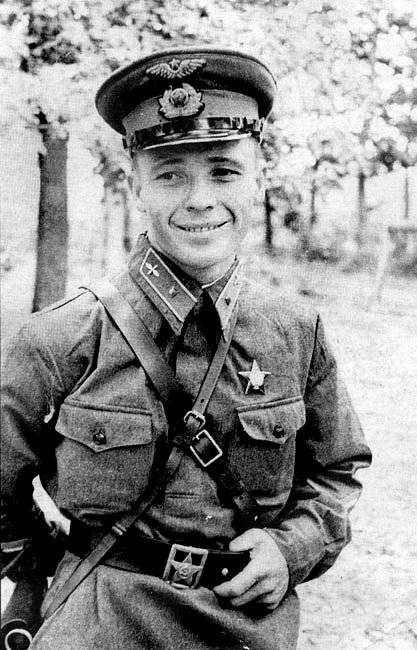
In 1938, Talalikhin was called up for military service. In parallel with the service, Victor was trained at the Borisoglebsk military aviation school of pilots. His skill grew, accumulated experience. Many noted that Victor Talalikhin is distinguished by courage and logical decisions during the flights.
As part of the 3 squadron of the regiment Talalikhin took part in the Soviet-Finnish war. Already in his first air battle on the I-153 fighter, Victor shot down an enemy plane, earning the praise of command and comrades. The joy of the first victory over the enemy was remembered by the pilot forever.
After some time Talalikhin again distinguished himself in battle. This time he had to cover the plane of his commander, Mikhail Ivanovich Korolev, who was pursuing the enemy's aircraft under fire from anti-aircraft guns. The commander was in a very difficult situation: his plane was shaken by multiple explosions of shells. On the tail was an enemy Fokker, who had already managed to damage the Queen’s plane.
Without thinking, Talalikhin rushed to the rescue of the commander, but the Fokker also landed on his tail. Victor, having laid a steep turn, was released from prosecution, and then with a long burst of machine gun hit the enemy. After the landing, Korolyov thanked Talalikhin cordially for their assistance in battle. On the questioning of command, as he decided on such a brave act, Victor modestly replied that he had to save the life of the commander.
During hostilities on the Karelian Isthmus, the best comrade of Viktor was Gumar Ayupov - a fearless pilot, like Talalikhin, selflessly in love with his work. Gumar was the same age as Victor. They quickly became friends, slept on adjacent beds in a dugout. Often they could be found together talking about their childhood, youth, friends, home, relatives and people close to them. In the regiment they were considered inseparable friends.
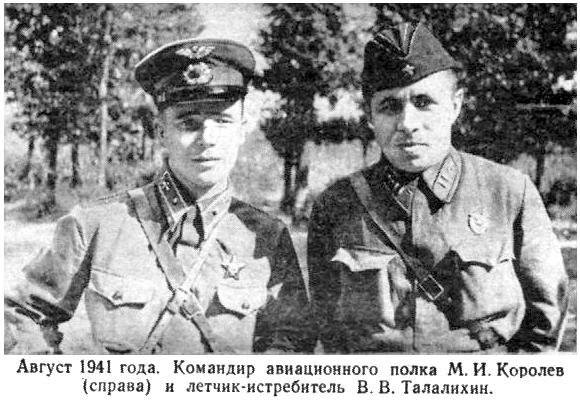
But the war made its changes in the friendly relations of Victor and Gumar. During the flight, Ayupov’s plane was shot down and fell onto the frozen Suana-Yarvi Lake. The pilot survived, but was seriously wounded. He was taken to the medical battalion, which is under the protection of the forest. Here he had an operation. His life, it seemed, was out of danger. However, the war decreed otherwise. The next morning, enemy aircraft bombed the battalion, despite the fact that they could perfectly distinguish the red medical cross from the air. Gumar Ayupov died. The death of a friend greatly grieved Victor Talalikhin, he was very upset by this loss.
In his next fight, Talalikhin rushed with even greater zeal - he was driven by a desire to get even with the enemy for the death of the front-line comrade. That day he shot down another enemy aircraft, adding a red star to the fuselage of his fighter. During the war against Finland, Talalikhin 47 once made combat missions, shot down an 4 aircraft, for which he was awarded the Order of the Red Star.
In March, the 1940 Soviet-Finnish War ended. Talalikhin went on vacation, going home to his parents.
In the spring of 1941, Victor Talalikhin graduated with honors from the training of aviation command commanders and was appointed flight commander in the 177 th Fighter Regiment. Here he met his old front-line comrade, Mikhail Korolev, who commanded the regiment.
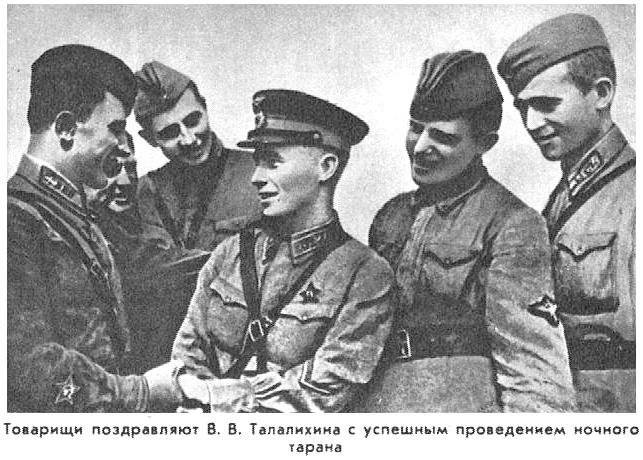
In June, the Great Patriotic War began. The 177 th Fighter Aviation Regiment took part in the defense of Moscow, defending the city from the southwest. The first air battle was accepted on July 25. In the last days of July, Talalikhin was appointed deputy commander of the first squadron. Work has become much more. Talalikhin personally conducted a debriefing with each of his subordinates, did not stint on the praises addressed to those who deserved it, and impartially criticized for the mistakes made during the sortie.
The main feat of Victor Talalikhin, having committed that he entered into history, was the first night ram. At night 7 of August He received an order to ascend to intercept fascist bombers. Talalikhin sat on the tail of the Heinkel -111. Despite the skillful maneuvers of the enemy, he managed to knock out one of the motors of the bomber. Soon, the ammunition in Talalikhin’s plane ran out. The next moment he came up with an extremely bold idea - to ram "Heinkel-111". He was aware that he was probably going to die, but he reassured himself that the fascists would die four times more. Victor's plane crashed into the tail of the bomber, the fighter threw back, but Talalikhin managed to jump with a parachute from a burning car and landed safely. Locals helped him get to the part. 8 August 1941 was awarded the title Hero of the Soviet Union to the brave pilot Viktor Talalikhin for this feat, and was awarded the Gold Star medal and the Order of Lenin. At that time, the fearless hero was only 22 of the year.
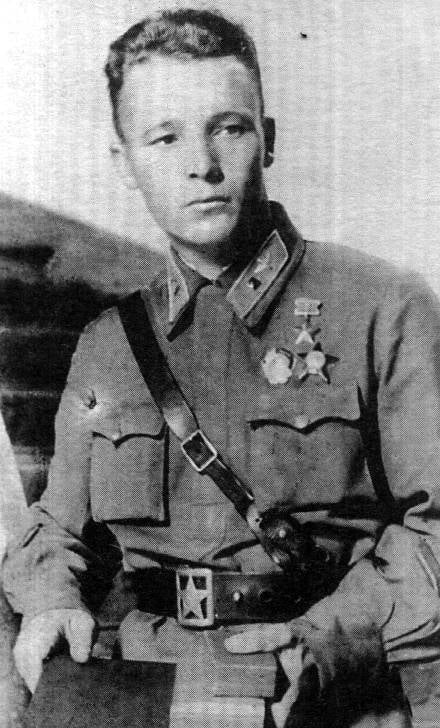
After this heroic deed, Viktor Talalikhin was not once distinguished during combat operations in the air. Accurate shooting, composure while driving and unexpected maneuvers for fascist pilots have always been characteristic of him. Talalikhin highly responsibly approached the duties of the commander of his squadron, was always very demanding, did not tolerate disorganization and violation of discipline.
The dashing pilot was killed on October 27 1941 of the year during the next sortie. That day 6 fighters covered our troops near the village of Kamenka, near Podolsk. Led by Talalikhin, the fighters entered the battle with the Messersami Me-109 aircraft. Victor, led by his intrinsic fearlessness, managed to shoot down one of the planes, but was severely wounded in the head. After a while, his plane fell.
Talalikhin is buried at the Novodevichy cemetery in Moscow. Streets in a number of cities of our country (Moscow, Volgograd, Borisoglebsk, Chelyabinsk, Nizhny Novgorod) are named after him. One of the ships of the Sea Fleet Russia bears his name. In the city of Podolsk, not far from the place of death of the pilot, his monument was erected.
Based on materials:
http://airaces.narod.ru/winter/talalih.htm
http://www.gistory.ru/content/viktor-talalikhin-nochnoi-taran-v-bitve-za-moskvu
http://www.sovross.ru/old/2006/90/90_2_3.htm
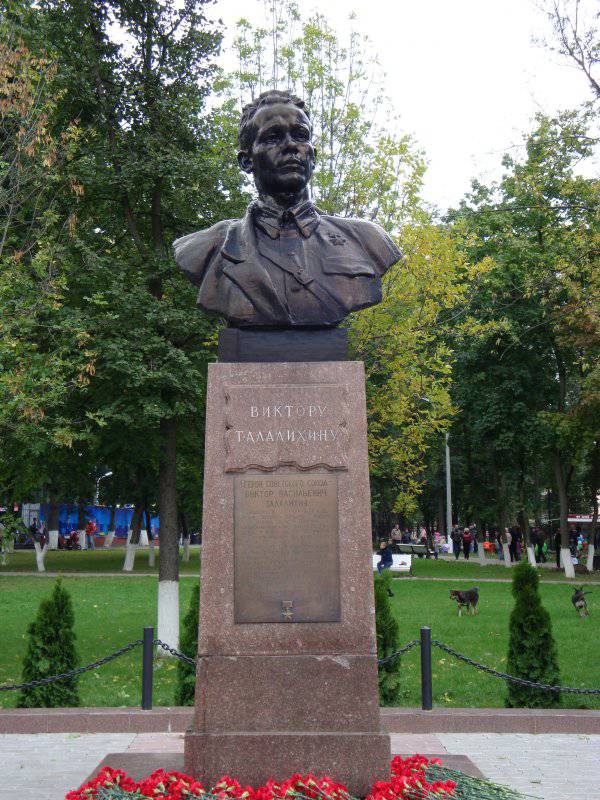
Information